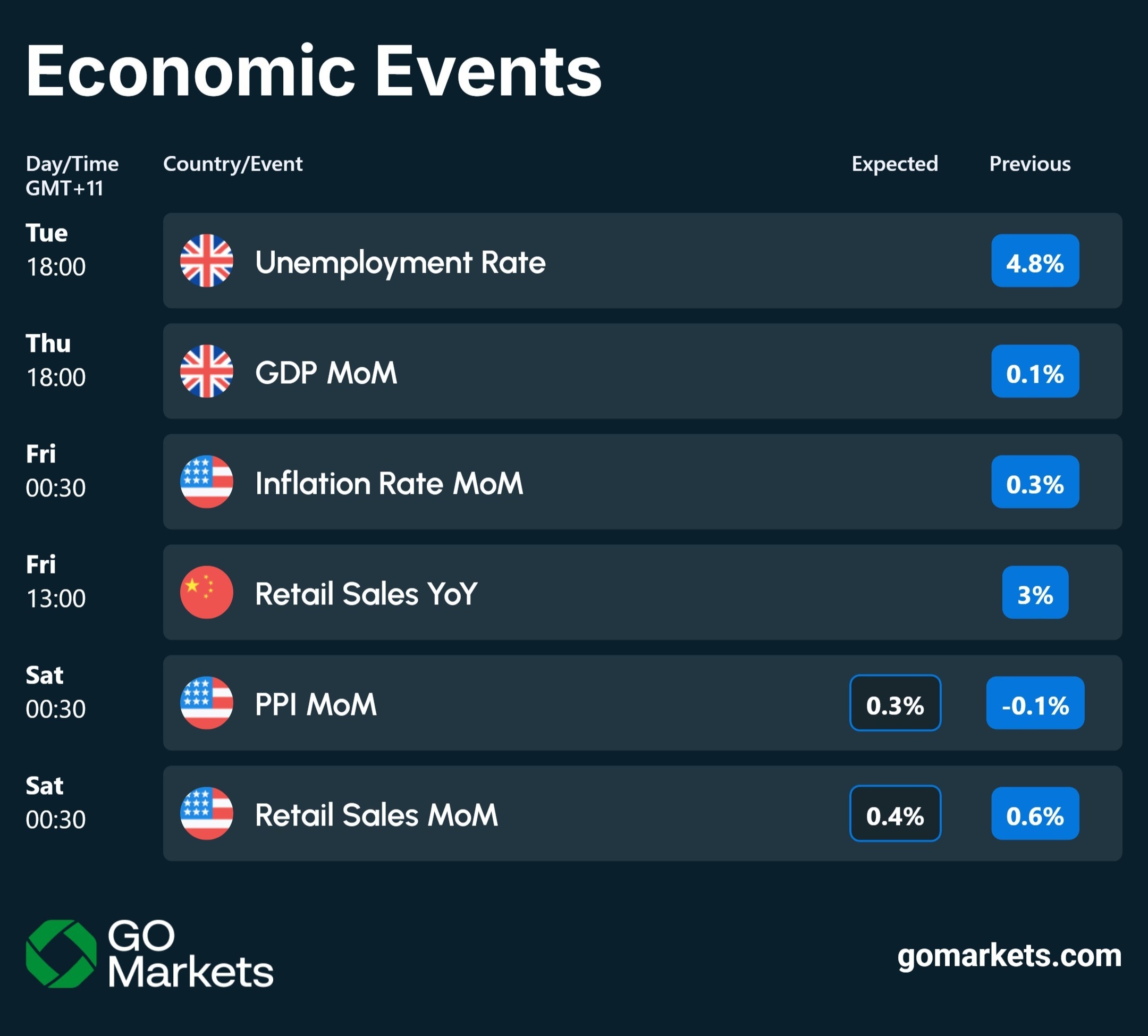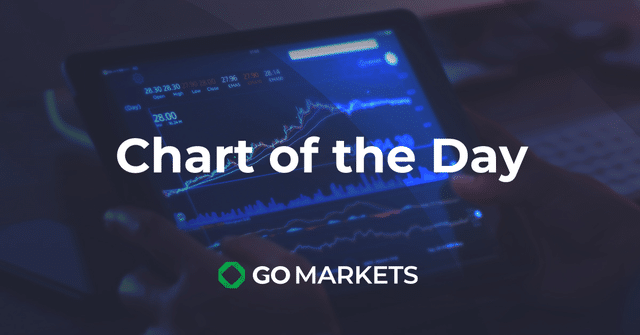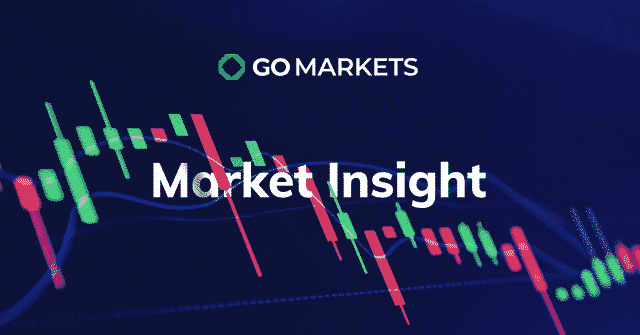市場新聞與洞察
透過專家洞察、新聞與技術分析,助你領先市場,制定交易決策。

Markets retreated last week, pulling back about 2.5-3% from record levels. While the decline is modest, it is marked by several headwinds that could create further pressure this week.
Government Shutdown Reaches Historic Length
The ongoing shutdown has now reached record duration, and there's still no clear resolution in sight. Healthcare remains the primary sticking point between the two sides. Some reports suggest potential progress, but the jury's still out on whether any deal will materialise or gain bipartisan support before the Thanksgiving holiday season.
Key Economic Data May Be Delayed
The shutdown's impact extends to data releases. Market-influencing government reports, including jobs numbers and CPI data, may be delayed this week — CPI is still technically scheduled, but the shutdown could affect its release. This data delay will make it harder to gauge the economy's true direction and could inject further volatility into markets.
Earnings Season Continues to Impress
Despite these macro headwinds, corporate America is delivering exceptional results. We're seeing an 82% EPS beat rate and 77% of companies exceeding revenue expectations. While we're in the final 10% of S&P 500 reports, some important retail stocks are still due. These consumer-facing companies could provide valuable insights into spending patterns and economic health.
NVIDIA Tests Critical Support Level
AI stocks are facing pressure, with NVIDIA testing a key technical level around $180-$185. The stock experienced five consecutive days of losses before bouncing strongly on Friday with a major wick rejection. If support at $180 breaks, we could see a drop to $165. However, Friday's bounce suggests a possible retest of $193. This is a crucial moment for the AI sector leader, and its direction could influence broader tech sentiment.
Market Insights
Watch the latest video from Mike Smith for the week ahead in markets.
Key economic events
Keep up to date with the upcoming economic events for the week.



Markets Eager To Resume As the Easter holidays fade, we quickly saw a market resurgence of traders looking to resume normality. Perhaps one of the more stand-out movers during today's London session was none other than the Pound Aussie cross (GBPAUD). Following the Reserve Bank of Australia's announcement to hold interest rates at 0.1%, the recently stronger Pound took a tumble, and we'll be looking at where the price may end up.
A Sizeable Move Since early hours, the price of GBPAUD declined by 1.05% or roughly 200 pips. Considering the Average True Range (ATR) tends to sit around 100-120 pips, it's not something to ignore. Is this just a one-off move, or is something larger happening here?
RBA Rates On Hold Until 2025 Perhaps the overriding factor that spiked AUD demand today is the dovish comments made by the RBA that suggest they'll aim to keep the current rates on hold until 2025. In an uncertain environment mainly consisting of negative rates worldwide, the ability to offer stability, however small, speaks volumes. But is it enough to stave off economic risks associated with the pandemic?
Probably not. Risky Business The Australian currency will remain risk-sensitive, and with Covid-19 cases continuing to rise throughout Europe and America, demand for the 'Aussie' will potentially struggle to find enough demand. By contrast, the Pound looks to build on vaccine success and hopefully reignite the economy in June/July by further easing lockdowns.
The potential for GBPAUD to turn bullish longer-term looks more probable at this stage. The idea that the pair could resume an upward trajectory is backed up by some relatively strong technical signals on both the hourly and daily Ichimoku charts listed below. Ichimoku Hourly Chart Analysis Beginning with the hourly, we can see today's bearish price action is heading towards the previous weekly pivot point of 1.8010 before finding some support.
Despite the decisive move to the downside, now that the pair found some short-term support, we'd generally expect some corrective price behavior during the upcoming sessions. Notice the RSI indicator (Relative Strength Index) is also in heavily oversold territory, further fueling speculation to the upside. The current weekly pivot point of 1.8145 makes an attractive potential target or a consideration for resistance.
Ichimoku Daily Chart Analysis The daily Ichimoku chart helps put today's price moves into perspective, further highlighting the bullish indicators in play. Note, the current price action is still trading well above the cloud, as is the lagging span (purple line). The thickness of the cloud also suggests plenty of support above 1.80 levels.
Remaining Tentatively Bullish So despite the sudden bearish activity seen today, the outlook for GBPAUD remains bullish across multiple timeframes, not accounting for any new Covid-19 issues that may emerge. Sources: Go Markets, Meta Trader 5, TradingView, Bloomberg


GBPCAD – Hourly Individually, both the British Pound and the Canadian Dollar have surged in recent trading sessions, appearing relatively strong against their peers in the short-term. With the latest fundamental data suggesting both currencies have benefited from similar economic drivers, it could be tough to navigate a directional bias for GBPCAD, as we'll discuss in today's Chart of The Day. Firstly, as the markets come to grip the idea that the Bank of England will seek to avoid cutting interest rates into negative territory, the Pound should continue to gather momentum along with positive reports of vaccine rollouts around the country.
Similarly, the Bank of Canada has also dismissed talks of negative rates and reaps the rewards of recent steadiness in global oil prices. At around $58 per barrel, we're seeing the highest oil prices in just over a year. And with further potential production cuts earmarked for Saudi Arabia, the commodity-sensitive CAD could see additional gains.
Technically speaking, Sterling does appear to have the slight upper hand from a longer-term trend perspective. However, in the short-term, the hourly chart shown looks bearish. We might be witnessing more corrective moves or some profit-taking activity following last week's sharp advance to higher levels instead of specific CAD demand.
This idea neatly ties in with the recent bearish divergence pattern highlighted on the RSI indicator above. A further sell-off on the hourly could target the current weekly pivot point (gold line), located at 1.7475. Looking at the price action during the past few weeks, it has a habit of utilising weekly pivots as critical support areas.
For example, not only did GBPCAD test last week's pivot of 1.7500 multiple times, but it even touched January's final pivot with pinpoint accuracy, reaching exactly 1.7350 before rebounding upwards. To the upside, the pair continues to find resistance around the early 1.76 regions, but as mentioned before, these trends display a more bullish bias when viewed longer-term. So despite all the factors contributing to a favourable condition for the Canadian Dollar, the Pound edges ahead in dominance as 2021's top-performing G10 currency thus far.
Given its momentum, any weakness is probably likely to be viewed as temporary, with traders eyeing the dips in price as possible opportunities to go long. Sources: Go Markets, Meta Trader 5, TradingView, Bloomberg


To begin the week, I thought we'd do something a little bit different. We have taken the current ten-year challenge sweeping social media and tried to apply it to a brief technical analysis summary of the major FX pairs. Where were they trading in early 2009?
And where are they now? Judging by the list below, it would seem gold wins the gold medal regarding overall performance. The following summaries will delve further into each trading pair.
EURUSD Even though current price action is trading just above the 200 MA suggesting the longer-term trend is bullish, the price action since 2009 provides more significant evidence of a strong downtrend in place, most notably the lower highs witnessed in 2009, 2011, 2014 and last year respectively. Following the rather dull consolidative period between 2015 to 2017, the Euro-Dollar pair has shown a new lease of life and has found the 1.25 level to play a significant role once again. At current levels though, the danger here is that we could slip back into the familiar rangebound territory if the supportive structure seen at 1.14 fails to contain sellers going forward.
The highlighted head and shoulders pattern might be a precursor to a EURUSD reversal back towards the 1.05 lows. GBPUSD Surprisingly, only a 5% difference in value since this time ten years ago. We see mostly rangebound moves since 2009, with the Brexit catalyst in 2016 providing fuel for an extended step down in price.
The recovery from 2017 to the beginning of 2018 may give a clue to future movements within the pair. Notice how the price has respected the 200 MA in recent years, it would appear the region of 1.35 could be a potential barrier if tested, resulting in a continuation of the longer-term downtrend. In this scenario, the previous 1.20 support is a target worth considering.
USDJPY In 2009 the Dollar-Yen pairing appeared somewhat heavy towards the downside. However, we've seen a steady recovery since the 2012 lows, and a validated bullish trendline is currently in play. In December last year, price attempted a sharp move down to 104 levels but was quickly rejected, resulting in further Dollar strength.
Key areas to note are the Fibonacci retracements of the 2015 high including the 50% level which has provided strong support around 100.00 and the 23.6% retracement at 113.80 which continues to act as tough resistance. Perhaps we'll see another rally north to re-test 113.80 longer-term, especially when RSI (Relative Strength Index) levels are looking oversold. AUDUSD Like a boomerang that's been thrown and come back, the Aussie has returned to where it began in 2009 following some large swings higher.
Currently, in a residual downtrend, it's difficult to see where this pair may up longer-term, but the key takeaway over the last decade would be the importance of the 0.70 zone regarding support and resistance levels. USDCAD It is also a case of 'Back To The Future' for the Loonie. Despite some significant price moves over time, current levels are almost identical to those seen this time ten years ago.
Technically still within a longer-term uptrend, price action has maintained a presence around the 200 MA and has produced a textbook series of higher highs and lower lows since mid-2017. It is also worth pointing out that the 50% retracement level near the 1.20 mark has provided strong support for the pair in both 2015 and 2017. The future outlook appears to be indecisive moves heading sideways.
USDCHF Not too much change for the Swissie either since 2009. Following the SNB crisis in 2015, price action has been practically non-existent with 1.03 acting as somewhat of a ceiling slowly squeezing the price into submission. We could either see a massive breakout after this extended consolidation phase or perhaps more of the same longer-term.
NZDUSD An impressive 36% gain since 2009. Longer-term we have settled around the 50% Fibonacci retracement level of the Jun 2014 high. Current levels also coincide with the 200 Moving Average which price action has failed to break above in recent years convincingly.
There is still a slight bias to the downside, and the previous support level of 0.62 could be a potential target should the Kiwi Dollar continue to grind lower. XAUUSD An impressive price rise in the last decade for the precious metal, and similar to Kiwi Dollar, current price action is sitting around the 50% Fibonacci retracement level from the August 2011 high. The overall longer-term trend has been sideways since 2013 with no clear directional bias in sight.
The only thing worth noting here is the current RSI situation which appears overbought and could spell some bearish activity in the weeks and months ahead. This article is written by a GO Markets Analyst and is based on their independent analysis. They remain fully responsible for the views expressed as well as any remaining error or omissions.
Trading Forex and Derivatives carries a high level of risk. For more resource on Forex trading check out our Forex Trading For Beginners introduction, Forex Trading Courses, open a Forex Demo Account or open a live Forex Trading Account. Sources: Go Markets MetaTrader, Google, Datawrapper, Tradingview.


Facebook has had a fair share of negative news headlines in recent times with lawsuits filed against the company and calls to improve the monitoring of information that is posted on the social media platform. Despite that, the share price of Facebook hit an all-time high this week after trading at above $314 per share for the first time during the trading day on Thursday. With the negative headlines, there is also a level of optimism about the future of the company with revenue numbers expected to increase in 2021.
Q4 2020– revenue growth Last year, the company saw a substantial slowdown in revenue growth in Q2 due to the COVID-19 pandemic when it saw a significant reduction in its advertising side of the business. However, Q4 revenue rose by 33% year-over-year, a significant increase from 22% growth in Q3 and 11% in Q2. ''This was a strong quarter for our business, as the acceleration of online commerce we’ve seen during the pandemic continued into the holiday season. Our total revenue for Q4 was $28.1 billion, which is a 33% year-over-year increase.
Our fastest growth rate in over two years. After a really difficult year for so many businesses, this holiday period was important. And while many businesses are still struggling, the good news is that Q4 was stronger than expected for retail'', Sheryl Sandberg, Facebook’s COO explained Q4 performance during its earning call back in January.
The share price is up by around 14% since the beginning of the year. Facebook – YTD Source: TradingView Price target increase Deutsche Bank recently increased their price target for Facebook from $355 to $385 and maintained a ''buy'' rating for the social media giant following positive feedback from advertisers and Mark Zuckerberg’s positive comments about more e-commerce moving onto the platform. Deutsche Bank data checks show that advertisers have continued to spend on the platform in Q1 of 2021.
Facebook report Q1 2021 earnings on 28 th April. You can trade Facebook (FB) and many other stocks from the ASX, NYSE, and the NASDAQ with GO Markets as a Share CFD. Click here for more information.
Trading Derivatives carries a high level of risk.


2020 was a good year for electric car space. We have seen shares of most electric car makers surge considerably and take steps to take the industry to the next level, most notably Tesla and NIO. Top 5 automakers by market cap* Tesla at $790.53 billion Toyota at $209.83 billion NIO at $97.21 billion BYD at $94.21 billion Volkswagen at $92.80 billion *As of 13/1/21 Source: Companies Market Cap Tesla The share price of the World's largest electric car maker (by market cap) Tesla rose above $700 at the end of last year, and it has continued to climb up to above $800 per share.
The recent price surge made Elon Musk the richest person in the World at $202 billion, passing Amazon owner Jeff Bezos. Goldman Sachs recently raised their price target for the stock from $455 to $780, keeping its rating at ''neutral'' despite the price target upgrade. ''We believe that the shift toward battery electric vehicle adoption is accelerating and will occur faster than our prior view'' they added. On the other hand, JPMorgan sees the share price plummeting by 87% to 90% a share in 2021.
Tesla stock is "in our view and by virtually every conventional metric not only overvalued but dramatically so," a team of JPMorgan analysts led by Ryan Brinkman said last month. The share price is currently trading at around the $854 level, up by 16% since the beginning of the year. Tesla are set to report earnings on 2/2/21.
NIO Tesla was not the only electric car maker making headlines in 2020. NIO, the Chinese electric car manufacturer also made moves in the electric vehicle (EV) space. The share price of the ''Chinese Tesla'' rose by around 1,110% last year, making it one of the best performing large-cap stocks of the year.
There are a few reasons why the stock has risen recently. The company recently announced its first luxury sedan - ET7. The new model will start at $69,000 and have will an estimated driving range of 620 miles on a full charge, according to the company.
NIO also announced that it is teaming up with Nvidia and Qualcomm. Following the latest news, JPMorgan announced that they have increased their price target for the ''Chinese Tesla'' from $40 to $75 per share. The share price is currently trading at around the $62 level, up by 16% since the beginning of the year.
Tesla are set to report earnings on 9/3/21. The electric vehicle industry is expected to grow in the coming years with many countries around the World announcing bans on selling new petrol and diesel cars in the next decade. You can trade Tesla (TSLA) and NIO (NIO) and many other stocks from the ASX, NYSE, and the NASDAQ with GO Markets as a Share CFD.
Click here for more information. Capital at risk.


GDP Dominance The United States dominates the world when it comes to having the largest economy by Gross Domestic Product (GDP), however, there are countries around the world which are showing major signs of economic growth and expected to overtake current world economic leaders, such as the United States and the United Kingdom. As mentioned above, the United States has the largest GDP in the world at around $19 trillion, followed by China and Japan at $11 and $4 trillion respectively according to the figures for 2017. However, looking to the future there are some economies that are expected to expand dramatically, and we can take a look at them in this article.
China Capital: Beijing Population: 1.4 billion (18.% of the world total) Official language: Standard Chinese Currency: Renminbi (CNY) Summary Even though the Chinese economy is already the second largest in the world, it is expected to grow even further over the next decade. China’s GDP has grown from around $4.5 trillion in 2008 to $12.2 trillion last year, a 166% increase over the last 9 years. And according to PricewaterhouseCoopers (PwC), one of world’s biggest professional service companies, China’s GDP is expected to grow to $38 trillion by 2030, making it the largest economy in the world.
India Capital: New Delhi Population: 1.3 billion (17% of the world total) Official language: Hindi Currency: Indian Rupee (INR) Summary India’s economy was 6th largest in the world at $2.5 trillion. Since 2008, Asia’s 3rd largest economy has expanded by around 110% from $1.1 to $2.5 trillion. It is expected to grow further to $19.5 trillion, according to PwC overtaking the United Kingdom, Germany, and Japan – making it the third largest economy in the world by 2030.
Indonesia Capital: Jakarta Population: 266 million (3.5% of the world total) Official language: Indonesian Currency: Indonesian Rupiah (IDR) Summary The Indonesian economy is currently 16th largest in the world at just over $1 trillion. It has nearly doubled since 2008. The South East Asian countries economy is projected to expand to around $5.4 trillion making it world’s 5th largest economy by 2030 overtaking United Kingdom and Germany.
Brazil Capital: Brasilia Population: 210 million (2.8% of the world total) Official language: Portuguese Currency: Brazilian Real (BRL) Summary Brazil is currently the world’s 8th largest economy at $2 trillion GDP in 2017. South America’s largest economy has experienced a steady growth since 2008 when it’s GDP was at $1.6 trillion. Brazil is expected to overtake countries like France and the United Kingdom by 2030 when its economy is projected to expand to around $4.4 trillion.
Mexico Capital: Mexico City Population: 130 million (1.7% of the world total) Official language: Spanish Currency: Mexican Peso (MXN) Summary Mexico’s economy has expanded by around 3% since 2008 and is currently the world’s 15th largest economy. However, its economy is expected to grow drastically over the coming years to around $3.6 trillion according to the projection making it the 9th largest economy in the world by 2030. By Klāvs Valters ( Market Analyst) This article is written by a GO Markets Analyst and is based on their independent analysis.
They remain fully responsible for the views expressed as well as any remaining error or omissions. Trading Forex and Derivatives carries a high level of risk. Sources: PwC, World Bank and Google Maps

